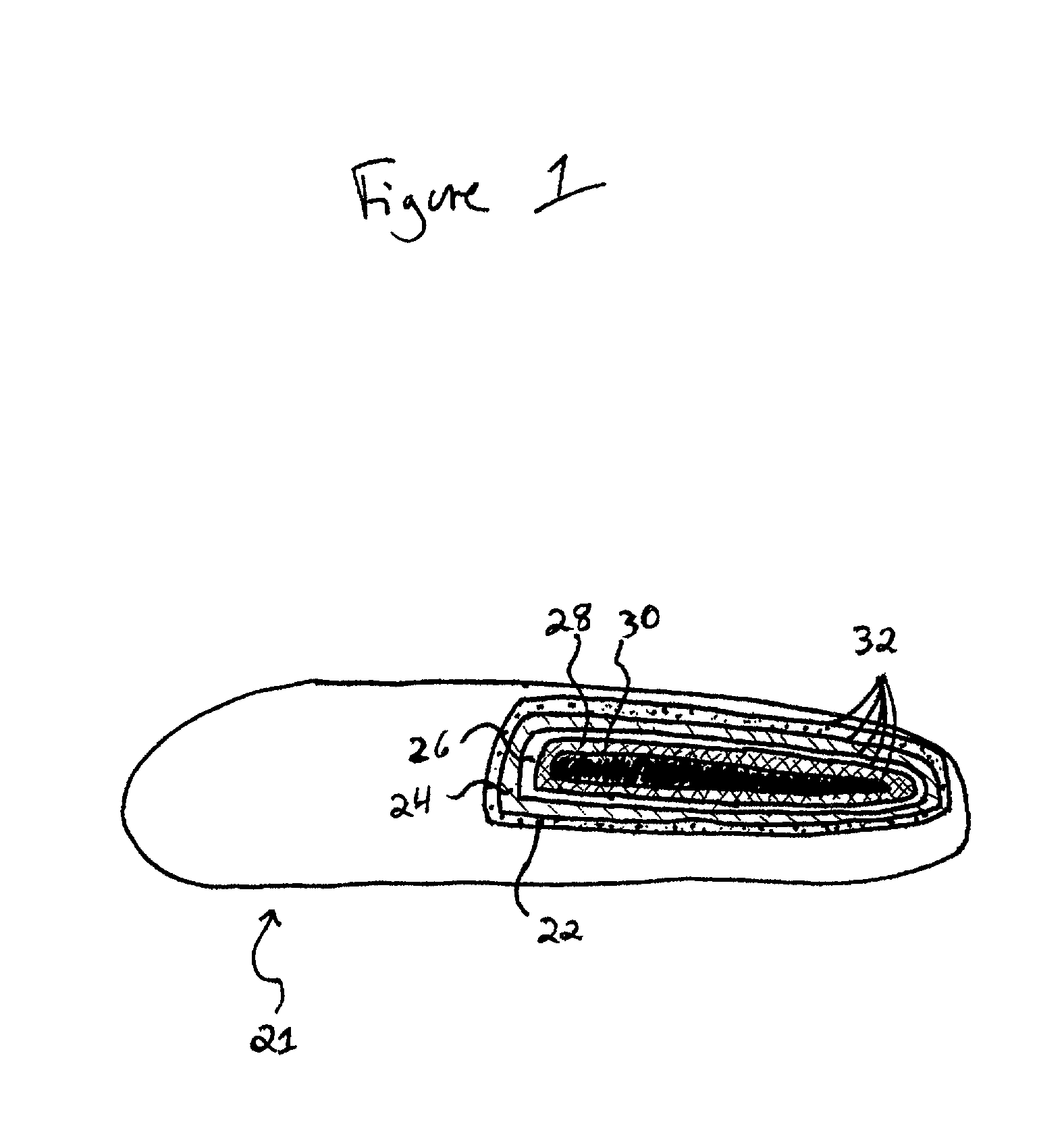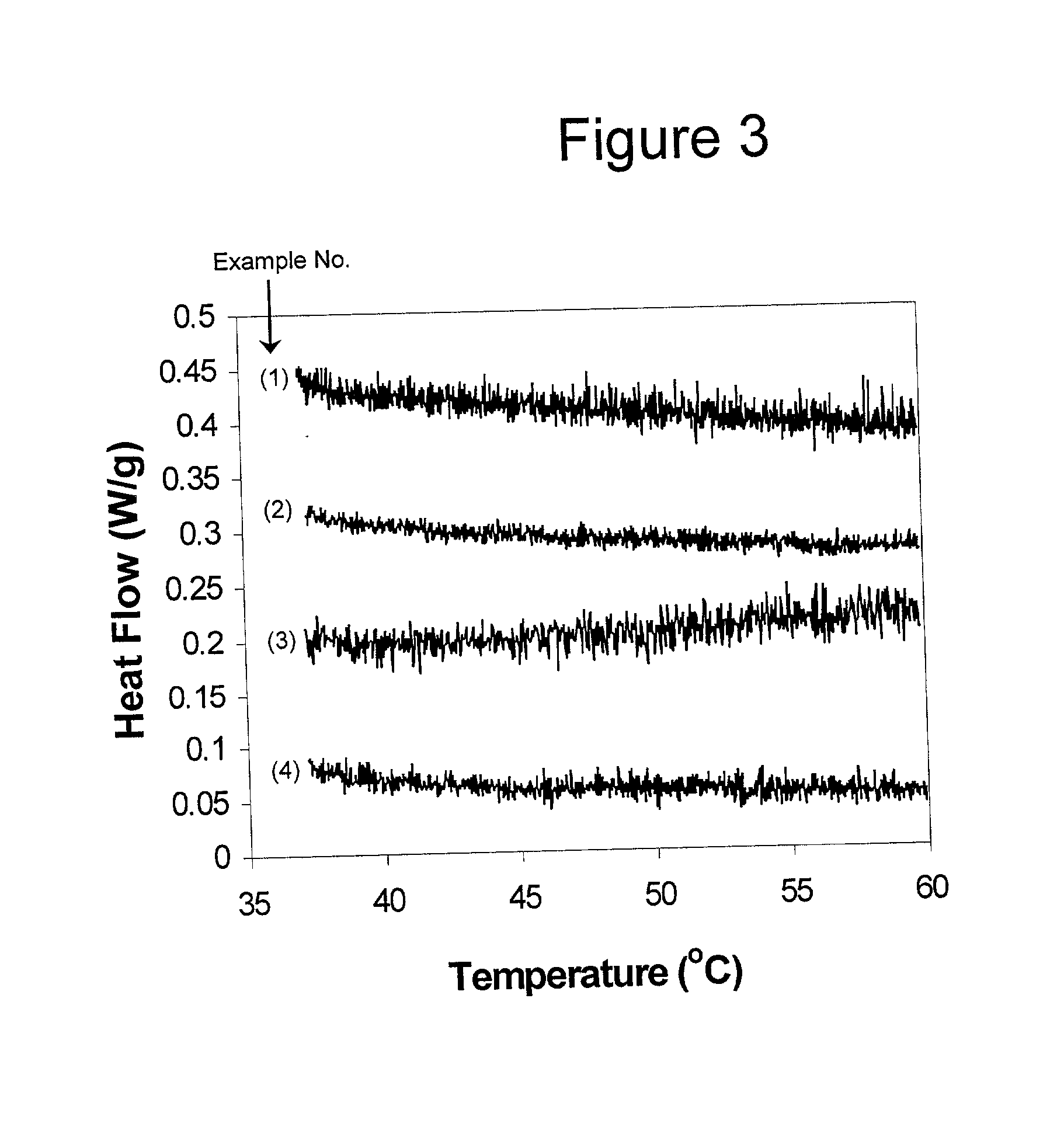Crystallizable/non-crystallizable polymer composites
- Summary
- Abstract
- Description
- Claims
- Application Information
AI Technical Summary
Benefits of technology
Problems solved by technology
Method used
Image
Examples
example 1
[0062] A polymer mixture was prepared by mixing PCL with ethyl benzoate in a 10 cm.sup.3 glass vial. In order to effect good solubilization, the mixture was sealed and heated at 50.degree. C. for 24 to 48 hours. The mixture was periodically stirred to disperse lumps and remove trapped air bubbles. Once the polymer was dissolved completely, the solution was cooled to 37.degree. C. and stored. Lysozyme particles were added to the polymer solution at a level of 10% by weight of the total formulation. Composition of the mixture is given in Table 1.
examples 2-4
[0063] Polymer blends were prepared as in Example 1, but using a mixture of PCL and PDLA as the polymeric component. Lysozyme particles were added to the polymer blend solutions. Compositions of the mixtures are given in Table 1.
example 5
[0064] A polymer mixture was prepared as in Example 1, but using PDLA as the polymeric component. Lysozyme particles were added to the polymer solution. Composition of the mixture is given in Table 1.
1 TABLE 1 Composition in weight percent Example PCL PDLA Ethyl benzoate Lysozyme 1 45 0 45 10 2 31.5 13.5 45 10 3 22.5 22.5 45 10 4 13.5 31.5 45 10 5 0 45 45 10
[0065] Crystallization Behavior
[0066] Solutions from Examples 1-4 were analyzed by differential scanning calorimetry (DSC) using a PERKIN ELMER DSC-7 instrument (PERKIN ELMER INSTRUMENTS, Boston, Mass.). The solutions were kept at 37.degree. C. until they were placed in the calorimeter. Data were collected from 37.degree. C. to 60.degree. C. at a heating rate of 1.degree. C. / minute. The scans are shown in FIG. 3. None of the samples gives evidence of a T.sub.m.
[0067] The solutions were separately injected via syringe into an agitated, temperature-controlled PBS bath at 37.degree. C. to form depots. After 4 days, the depots were r...
PUM
| Property | Measurement | Unit |
|---|---|---|
| Percent by mass | aaaaa | aaaaa |
| Composition | aaaaa | aaaaa |
| Miscibility | aaaaa | aaaaa |
Abstract
Description
Claims
Application Information
 Login to View More
Login to View More - R&D
- Intellectual Property
- Life Sciences
- Materials
- Tech Scout
- Unparalleled Data Quality
- Higher Quality Content
- 60% Fewer Hallucinations
Browse by: Latest US Patents, China's latest patents, Technical Efficacy Thesaurus, Application Domain, Technology Topic, Popular Technical Reports.
© 2025 PatSnap. All rights reserved.Legal|Privacy policy|Modern Slavery Act Transparency Statement|Sitemap|About US| Contact US: help@patsnap.com



